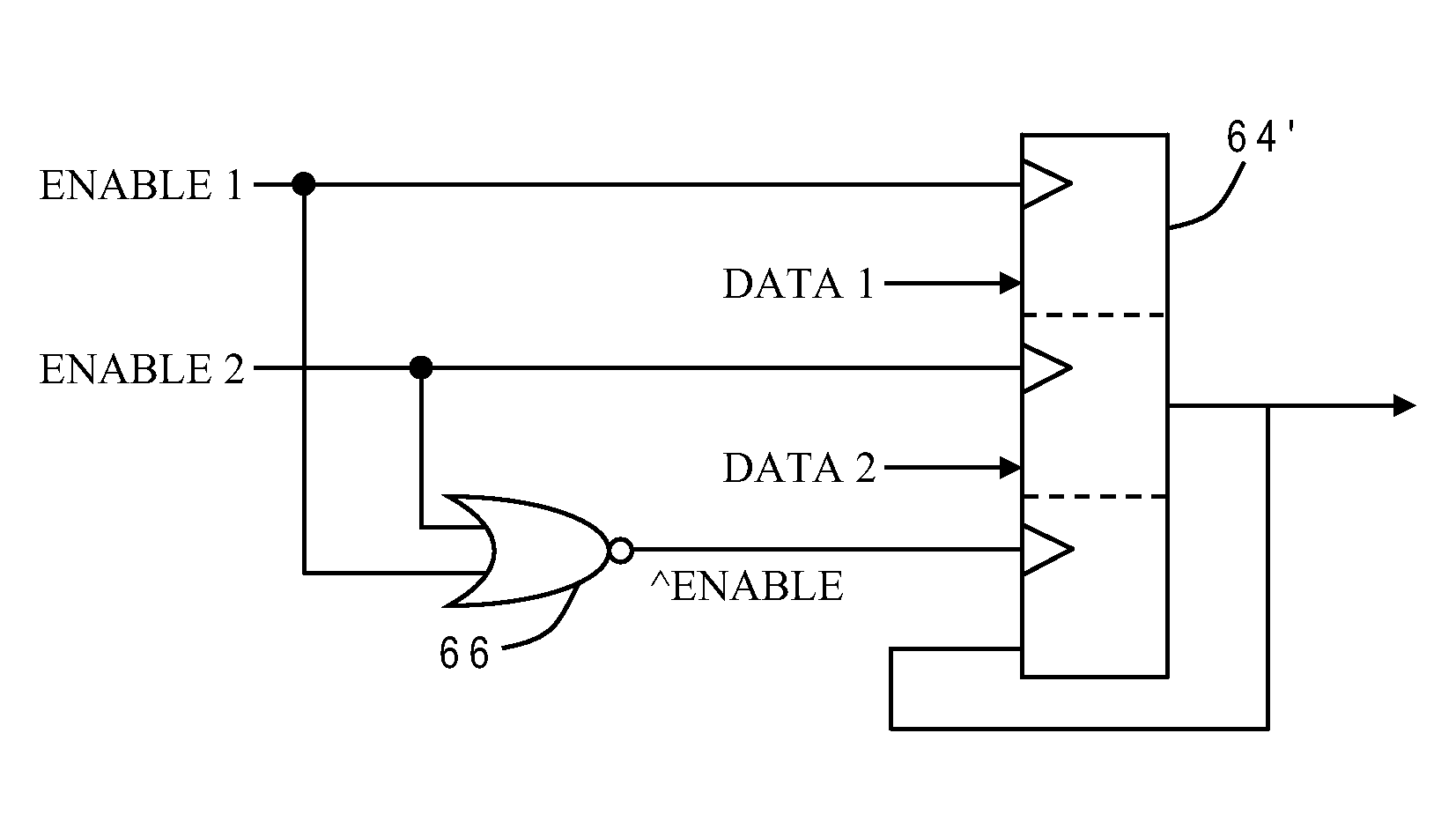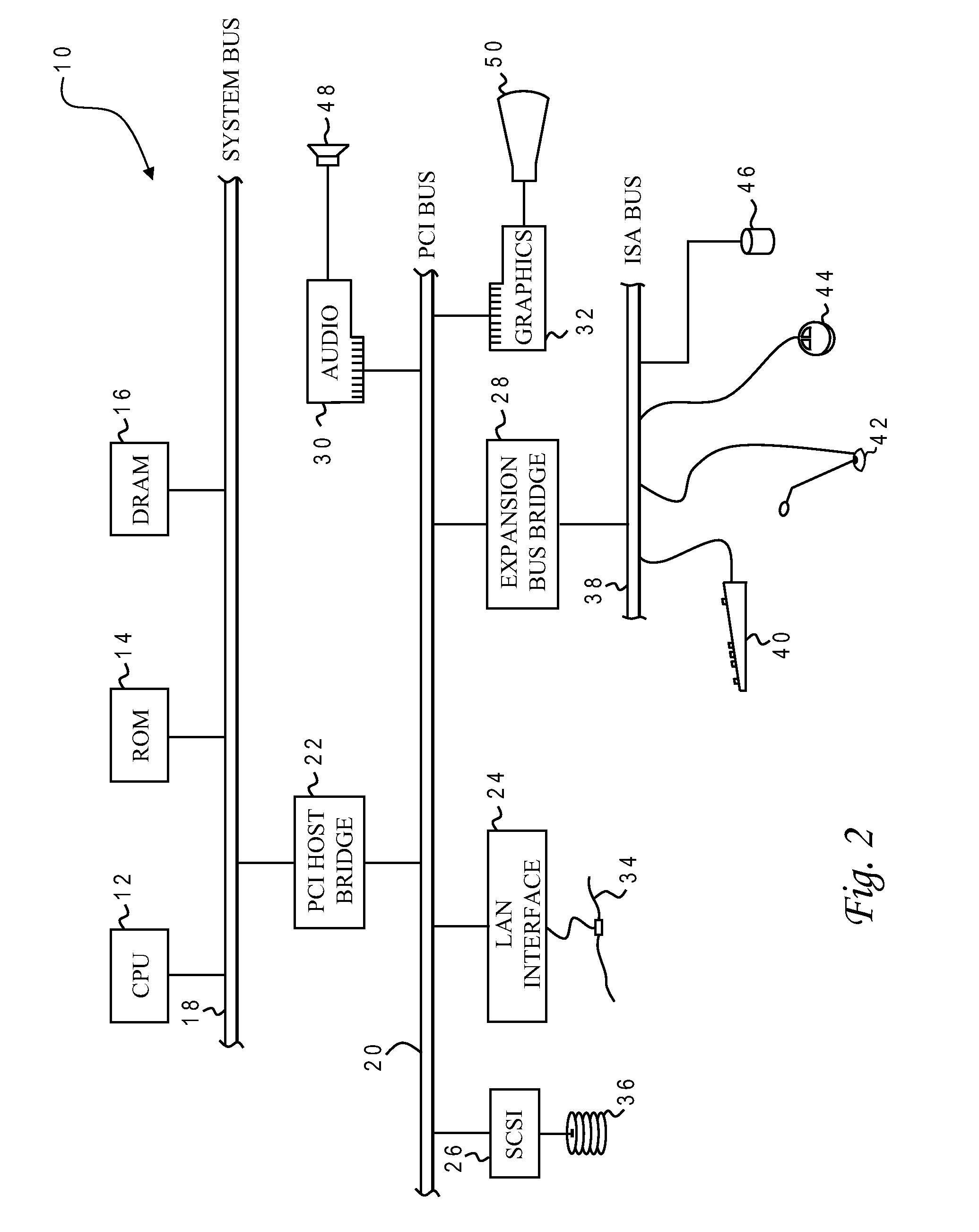Clock-gated model transformation for asynchronous testing of logic targeted for free-running, data-gated logic
a technology of clock-gated logic and model transformation, which is applied in the field of model transformation of clock-gated logic, can solve the problems of large number of cells, difficult physical design without the aid of computers, and complicated connections between cells
- Summary
- Abstract
- Description
- Claims
- Application Information
AI Technical Summary
Benefits of technology
Problems solved by technology
Method used
Image
Examples
Embodiment Construction
)
[0024]The present invention provides a novel method for modeling asynchronous behavior of a circuit, and is generally applicable to any type of digital circuit, such as execution units or memory, and clock-controlled (functional) or free-running (scan) logic. The method takes a netlist generated by conventional means and modifies latches in the netlist by adding an extra latch port to better emulate asynchronous conditions and identify potential timing problems. As explained more fully below, the present invention is particularly useful in modeling asynchronous behavior of a circuit which is clock-gated at a high-level abstraction but may be implemented as free-running, data-gated logic.
[0025]With reference now to the figures, and in particular with reference to FIG. 2, there is depicted one embodiment 10 of a computer system programmed to carry out the model transformation in accordance with one implementation of the present invention. System 10 includes a central processing unit ...
PUM
 Login to View More
Login to View More Abstract
Description
Claims
Application Information
 Login to View More
Login to View More - R&D
- Intellectual Property
- Life Sciences
- Materials
- Tech Scout
- Unparalleled Data Quality
- Higher Quality Content
- 60% Fewer Hallucinations
Browse by: Latest US Patents, China's latest patents, Technical Efficacy Thesaurus, Application Domain, Technology Topic, Popular Technical Reports.
© 2025 PatSnap. All rights reserved.Legal|Privacy policy|Modern Slavery Act Transparency Statement|Sitemap|About US| Contact US: help@patsnap.com



